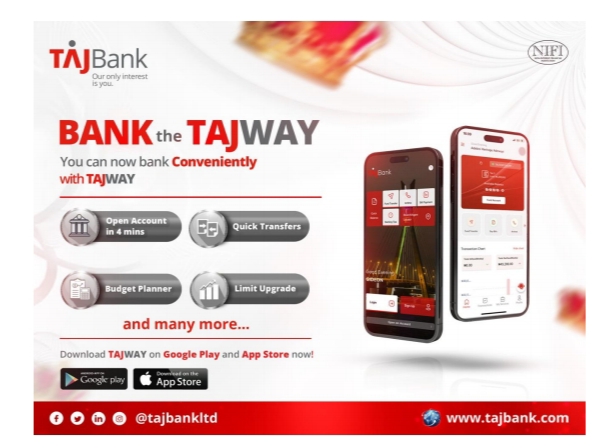The Nigerian Communications Commission, NCC, recently launched the country into another phase of telecoms revolution with the recent approval of e-SIM trial. This innovation is expected to be the game-changer for telecoms consumers in the country.
In its proactive regulatory approach, the Nigerian Communications Commission, NCC, recently granted approval for two mobile network operators, (MNOs) – MTN Nigeria and 9Mobile – to carry out a trial on the workability of embedded Subscriber Identification Modules, e-SIM, Service in Nigeria. This came as another bold step towards preparing the country for the adoption of the newest technologies such as the 5G, Internet of Things (IoT), Big Data, among others.
With several innovations such as the e-SIMs being pushed by the telecoms regulator, the country’s telecommunications has been one of the most active sectors and arguably the most vibrant of the country’s economy. Aside from the rising figures of subscriptions for voice and data, the economic impacts of the sector have been rising steadily.
The trial
The trial for MTN and 9mobile, which is approved to run for one year, will involve testing 5,000 e-SIMs by the two networks, subject to compliance with a number of regulatory conditions.
With several innovations such as the e-SIMs being pushed by the telecoms regulator, the country’s telecommunications has been one of the most active sectors and arguably the most vibrant of the country’s economy.
These conditions include full compliance by the MNOs with the Registration of Telecoms Subscribers Regulations 2011; the Mobile Number Portability Regulations and Business Rules 2015; Guidelines on SIM Replacement 2017; and non-degradation of the Quality of Service (QoS) experienced by users of e-SIMs.
Speaking in a statement issued recently by the Commission, the Executive Vice Chairman of NCC, Prof. Umar Garba Danbatta, said the primary objective of the e-SIM trial is to assess the technical performance of the e-SIM on telecoms service providers’ network towards eventual rollout, if satisfactory.
An e-SIM is a small chip that is embedded in a mobile phone or smart device. It is designed for convenience, flexibility, and simplicity. The e-SIM makes it easier for subscribers to choose a pre-paid plan provider and switch between network operators. The information on the e-SIM is rewritable by operators and the identification information can be updated over time.
According to the EVC, the e-SIMs is a technology that will eliminate the need for physical SIM card slots on mobile devices in the near future, adding that the trial is in line with the commission’s forward-looking regulatory approach to ensure Nigeria’s telecoms ecosystem is in tandem with global best practices.
Understanding e-SIM
A SIM, which stands for “subscriber identity module,” basically contains the information that authenticates your identity to a carrier. In other words, the SIM card is what tells a carrier that a customer is who he or she is — and without it, carriers wouldn’t know that customers are subscribed to their network, and thus wouldn’t let them use their cell towers.
An e-SIM is an electronic, or embedded, SIM. Instead of a physical card, SIM technology is built right into a customer’s phone. It’s a small chip that’s used to authenticate a customer’s identity with his carrier. Already new phones like the Pixel 4, iPhone 11 Pro, and Motorola Razr boast of e-SIM support.
e-SIMs are embedded in smartphones, smart devices, and PCs so there’s no physical card involved. A tiny chip is installed directly in the device system supported with embedded software.
For this reason, the software can only be activated remotely by a cellular network carrier, like telcos. Subscriber data, which is programmed into an e-SIM during the registration process, can be reprogrammed to another network provider later. This means roaming on a local network outside the country might no longer be necessary because switching networks will be easier.
With an e-SIM, a subscriber’s phone has a few new settings devoted to his SIM card that allow him to switch between lines and carriers and manage accounts. The Google Pixel 2, for instance, was among the first phones to support e-SIM technology, and an app for managing e-SIM is available from the Google Play Store. Then, the iPhone XS came out, and it offered both a physical SIM card and an e-SIM as a secondary, though the e-SIM was only enabled later down the line through an iOS software update.
Benefits of e-SIMs
As technology advances, e-SIMs will likely find a home in a new generation of LTE-connected computers. Since the always-connected computers first emerged in 2018, the push to provide connectivity anywhere has kicked into overdrive. Given the trend toward anywhere connectivity, a customer should expect to see many more LTE-connected computers in the next few years.
Industry experts have observed that slowly but surely, it looks like e-SIMs will take over because they provide a new level of convenience and accessibility for everyone. As long as a carrier supports the e-SIMs and a customer’s phone supports them, then that may be all a customer needs to start using the new technology today. To help bridge the gap, some phones with e-SIMs still have traditional SIM card slots, but it’s a good bet that eventually, those trays could go away altogether.
Whether a customer is travelling, switching carriers, or upgrading his phone, an e-SIM sounds much easier to manage than any of the alternatives. Fortunately, the technology is spreading faster than consumers can keep up, and soon it’ll be everywhere.
Speaking on the benefits of the technology during the announcement of the commencement of the e-SIM trial by MTN Nigeria, the company’s Chief Transformation Officer, Bayo Adekanmbi, noted that the e-SIM is eco-friendly. According to him, “previous SIM cards were generally made with some plastic which was of no use. Ideally, what makes the SIM card work is the chip and not the plastic. Customers embracing the e-SIM would be reducing the use of plastic and thereby reducing the user’s carbon footprint, which is good for the environment.”
Coming at the same time when preparations are in top gear for the 5G rollout, the e-SIM trial further demonstrates the proactiveness and foresightedness of the country’s telecoms regulator.
“Travellers, tourists, or consumers relocating to other countries can easily switch operators from country to country without the need of getting a new device, another SIM card, or roaming their lines. Local customers also have the advantage of switching from one mobile carrier to another for reasons like a better deal or better network coverage in an area. This means less time speaking with carriers, and ordering and waiting for a new SIM, all of which can be done from your phone settings via the e-SIM software,” he said.
Adekanmbi added that customers would also not have to go through the hassle of cutting SIM cards or looking out for devices compatible with their current SIM cards when changing devices. All they need to do is authenticate their identities at the nearest carrier’s branch to activate their profile on the new device.
“The e-SIM offers much more flexibility to the consumer than currently used SIM cards do. With e-SIMs, it is possible to have two plans from two different carriers. This means you can use one number for business and another number for personal calls; add a local data plan when you travel outside of the country or region and have a separate voice, text, and data plans,” he added.
Adekanmbi assured that “with the introduction of the e-SIM, we will offer customers a seamless and distinctive digital experience with new levels of flexibility, simplicity, and convenience. This is a further demonstration of our firm’s commitment to delivering the benefits of a bold new digital world to our customers”.
Conclusion
Coming at the same time when preparations are in top gear for the 5G rollout, the e-SIM trial further demonstrates the proactiveness and foresightedness of the country’s telecoms regulator. This will, no doubt, bring succour to many subscribers and help the country to seamlessly adopt other latest technologies.













